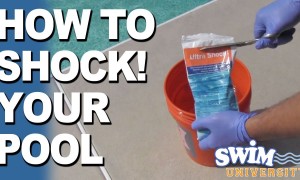It’s starting to get chilly outside at night, which means that fall is just around the corner. While you might have a month or two more to use your pool, it’s time to think about closing it up for the season. After all, you don’t want to leave it exposed to debris or that surprise October snowstorm. Here are some tips to help you keep your pool safe and ready for spring:
#1 Remove all debris.
Clear your pool of all debris, including any algae clinging to the sides. If necessary, drain the pool of all water and do a thorough scrubbing to get your pool fresh and clean for next year.
#2 Lower the water level.
The water level should fall below the skimmer so it doesn’t freeze and cause irreparable damage over the winter. Follow these guidelines according to your location’s climate:
- Freezing: Keep water 4 to 6 inches below the skimmer
- Non-freezing: Keep water filled to the brim of the pool
#3 Balance the pool pH level.
Use a testing kit to check your pool’s pH level. You should have a pH level between 7.4 and 7.6 before closing it up for the winter. If the pH level is too high or too low, you’ll need to fix it before closing the pool. This will keep the water balanced until next year.
#4 Shock your pool.
A good shocking will help to remove any extra bacteria left in your pool. “Shocking” a pool means adding enough chlorine to remove all bacteria and lingering algae in the water.
#5 Drain all plumbing lines.
When you close your pool for the winter, you must also prepare the plumbing lines attached to it. This involves:
- Allowing the filter a plug at the bottom to drain
- Moving the multiport valve into the closed or “winterize” position
- Draining the pump
- Running the chemicals out of the feeder
- Taking the pressure gauge indoors for the winter to avoid breakages in the tube
#6 Put a cover over the pool.
To keep debris and any pests out of your pool, make sure it’s securely covered for the winter. Your pool cover should be made of a strong material — not just plastic — and should also be able to withstand the elements. Flimsy covers may bend under heavy weight (like snow or hail) and tear.
#7 Monitor chemical levels throughout the winter.
Routinely check the chemical levels of the water in your pool and adjust them as necessary. If you don’t have the materials on-hand, you can always get a swimming pool professional to help.







I would love to have my own pool one day because i train for triathlons. However, we can get freezing temperatures and snow in my area. I would definitely need to winterize my future pool to avoid damage. I bet it’s really important o drain all of the lines to make sure that pipes don’t freeze or that pumps get damaged. Thanks for the tips. I’ll keep them in mind for the future.